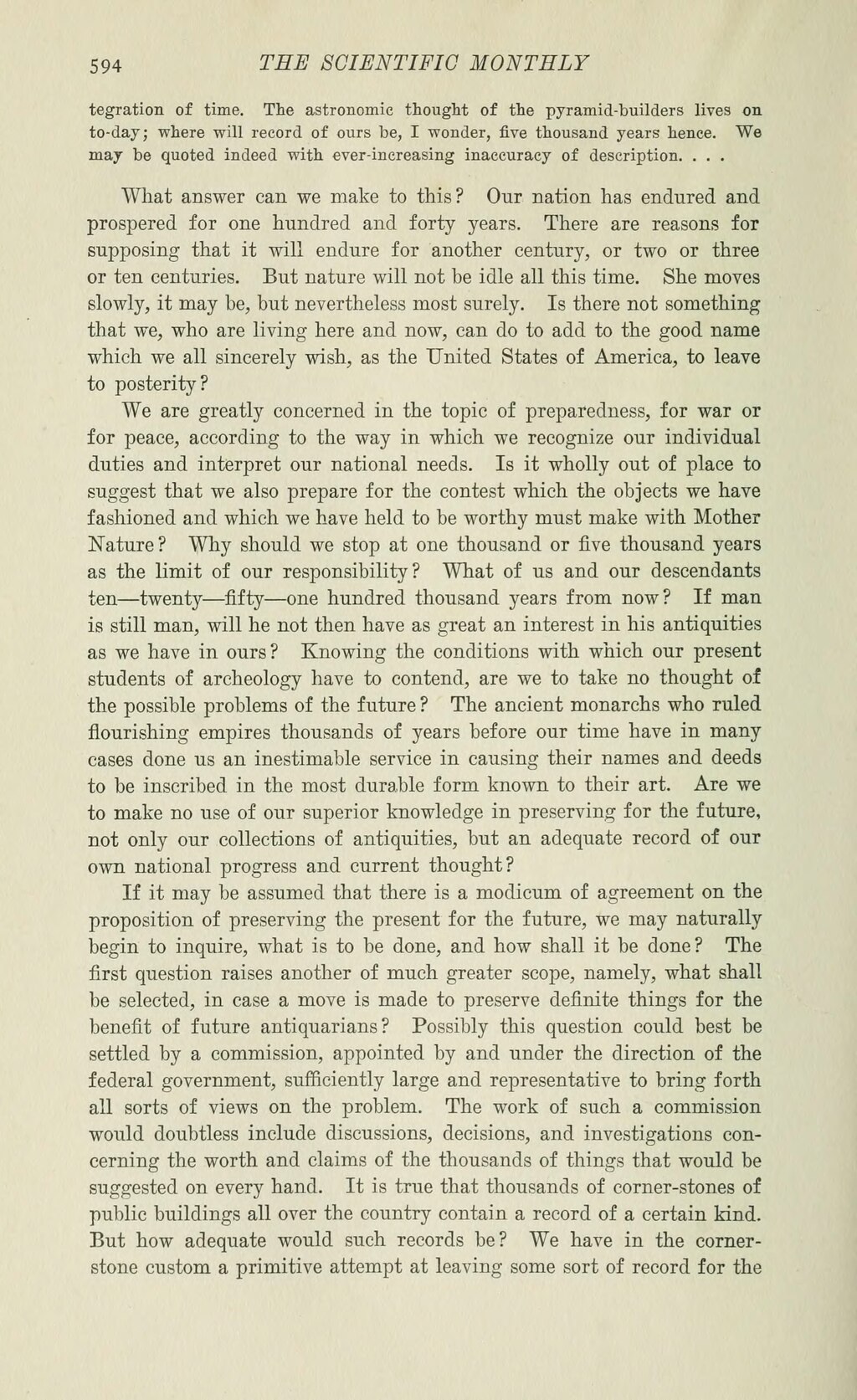tegration of time. The astronomic thought of the pyramid-builders lives on to-day; where will record of ours be, I wonder, five thousand years hence. We may be quoted indeed with ever-increasing inaccuracy of description. . . .
What answer can we make to this? Our nation has endured and prospered for one hundred and forty years. There are reasons for supposing that it will endure for another century, or two or three or ten centuries. But nature will not be idle all this time. She moves slowly, it may be, but nevertheless most surely. Is there not something that we, who are living here and now, can do to add to the good name which we all sincerely wish, as the United States of America, to leave to posterity?
We are greatly concerned in the topic of preparedness, for war or for peace, according to the way in which we recognize our individual duties and interpret our national needs. Is it wholly out of place to suggest that we also prepare for the contest which the objects we have fashioned and which we have held to be worthy must make with Mother Nature? Why should we stop at one thousand or five thousand years as the limit of our responsibility? What of us and our descendants ten—twenty—fifty—one hundred thousand years from now? If man is still man, will he not then have as great an interest in his antiquities as we have in ours? Knowing the conditions with which our present students of archeology have to contend, are we to take no thought of the possible problems of the future? The ancient monarchs who ruled flourishing empires thousands of years before our time have in many cases done us an inestimable service in causing their names and deeds to be inscribed in the most durable form known to their art. Are we to make no use of our superior knowledge in preserving for the future, not only our collections of antiquities, but an adequate record of our own national progress and current thought?
If it may be assumed that there is a modicum of agreement on the proposition of preserving the present for the future, we may naturally begin to inquire, what is to be done, and how shall it be done ? The first question raises another of much greater scope, namely, what shall be selected, in case a move is made to preserve definite things for the benefit of future antiquarians? Possibly this question could best be settled by a commission, appointed by and under the direction of the federal government, sufficiently large and representative to bring forth all sorts of views on the problem. The work of such a commission would doubtless include discussions, decisions, and investigations concerning the worth and claims of the thousands of things that would be suggested on every hand. It is true that thousands of corner-stones of public buildings all over the country contain a record of a certain kind. But how adequate would such records be? We have in the corner- stone custom a primitive attempt at leaving some sort of record for the
